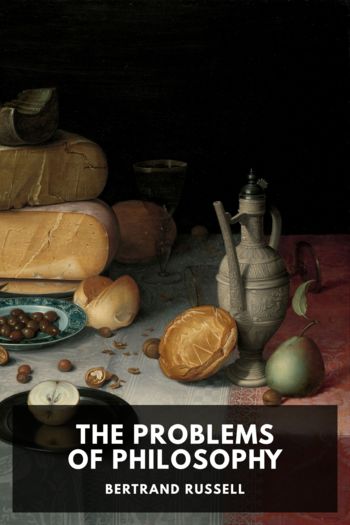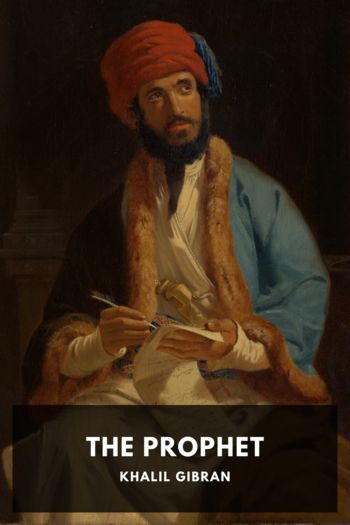Genre Other. Page - 294

Description
First published in 1602 by William Shakespeare, The Merry Wives of Windsor features the popular figure Sir John Falstaff, who first appeared in Henry IV, Part 1 and Part 2. Some speculate that Merry Wives was written at the behest of Queen Elizabeth I, who wanted to see Falstaff in love; and that Shakespeare was forced to rush its creation as a result, and so it remains one of Shakespeare’s lesser-regarded plays.
The play revolves around two intertwined plots: the adventures of the rogue Falstaff who plans to seduce several local wives, and the story of young Anne Page who is being wooed by prominent citizens while she has her sights set on young Fenton. The wives come together to teach Falstaff a lesson, and in the end love triumphs.
The Merry Wives of Windsor is believed to have been first performed in 1597 and was subsequently published in quarto in 1602, in a second quarto in 1619, and then in the 1623 First Folio. Despite holding a lesser place in Shakespeare’s canon, it was one of the first Shakespearean plays to be performed in 1660, after the reinstatement of Charles II and theatre once again was permitted to be performed in London.
This Standard Ebooks production is based on Sir Arthur Quiller-Couch and John Dover Wilson’s 1923 Cambridge edition.

Description
A doctor is released from the Bastille after being falsely imprisoned for almost eighteen years. A young woman discovers the father she’s never known is not dead but alive, if not entirely well. A young man is acquitted of being a traitor, due in part to the efforts of a rather selfish lout who is assisting the young man’s attorney. A man has a wine shop in Paris with a wife who knits at the bar. These disparate elements are tied together as only Dickens can, and in the process he tells the story of the French Revolution.
Charles Dickens was fascinated by Thomas Carlyle’s magnum opus The French Revolution; according to Dickens’ letters, he read it “500 times” and carried it with him everywhere while he was working on this novel. When he wrote to Carlyle asking him for books to read on background, Carlyle sent him two cartloads full. Dickens mimicked Carlyle’s style, his chronology, and his overall characterization of the revolution; although A Tale of Two Cities is fiction, the historical events described are largely accurate, sometimes exactly so. Even so, Dickens made his name and reputation on telling stories full of characters one could be invested in, care about, and despise, and this novel has all of those and more. It also, in its first and last lines, has two of the most famous lines in literature. With the possible exception of A Christmas Carol, it is his most popular novel, and according to many, his best.

Description
Guy Newell Boothby, born in Adelaide, was one of the most popular of Australian authors in the late 19th and early 20th century, writing dozens of novels of sensational fiction.
A Bid for Fortune, or Dr. Nikola’s Vendetta is the first of his series of five books featuring the sinister mastermind Dr. Nikola, a character of gothic appearance usually accompanied by a large black cat, and who has powers of mesmerism.
In this first novel, the protagonist is a young Australian, Richard Hatteras, who has made a small fortune in pearl-diving operations in the Thursday Islands. With money in his pocket, he decides to travel. Visiting Sydney before taking ship for England, he meets and falls in love with the daughter of the Colonial Secretary, Sylvester Wetherell. As the story moves on, it is revealed that Wetherell has fallen foul of the evil Dr. Nikola, who has developed a devious scheme to force Wetherell to submit in to his demands to give him a mysterious oriental object he has acquired. The life and liberty of Hatteras’ lady-love are imperilled as Nikola’s plot moves on, and Hatteras has to make strenuous efforts to locate and free her.
Boothby’s novels, particularly the Dr. Nikola books, achieved considerable popular success, particularly in his native country of Australia. A study of library borrowings in the early 20th Century has shown that Boothby’s works were almost as frequently borrowed in Australia as those of Charles Dickens and H. Rider Haggard.

Description
In this, Gaboriau’s penultimate Lecoq novel, Lecoq doesn’t make an appearance until the last few chapters of the book. In fact, the protagonists’ identity remains unclear until almost halfway through. They’re not missed, though, because the antagonists are a group of blackmailers of exhaustive ingenuity and knowledge, and piecing together the game they’re playing with several noblemen and women occupies all of one’s faculties for most of the book.
Young love, old love, forbidden love, lost love, along with a couple of missing individuals: what is the blackmailers’ endgame? Will Lecoq be able to figure it out in time? Called “French sensational” in its day, Lecoq’s last case is still sensational today.

Description
A bank safe is robbed. Only two men have both the key and the combination to the safe. The police naturally look to the employee rather than the owner of the bank. But Monsieur Lecoq, as always, sees what everyone else misses. Was it one of the two? Or was it a seemingly-impossible third party? Only Lecoq will be able to determine it. But why doesn’t he want his involvement in the case known?
Like Gaboriau’s two novels before it, File No. 113 is a mystery with a Dickensian tragedy behind it. Men and women of good character, of bad character, and good character who make bad choices abound, and remind us that the best mysteries have great personalities inhabiting them.

Description
The last Lecoq novel goes back to the beginning, to Monsieur Lecoq’s first case, the case that began his reputation as a master of detection, master of disguise, and master of detail. The case begins simply: Lecoq and several other policemen come upon a crime as it’s being committed. Three men are dead and the killer is in custody. But who is he? Lecoq and his companion officer spend months trying to figure it out, to no avail. Lecoq finally goes to visit his old mentor in order to gain some insight.
The scene then changes to some fifty years previous; in the aftermath of Waterloo, some noblemen return from exile. One of them insults the character of a local who has acted honorably on the nobleman’s behalf, and the remainder of the novel is devoted to how those few minutes end up unravelling the lives of everyone present, and many who aren’t.
Gaboriau again demonstrates his ability to mix detective mystery and Dickensian drama, and foreshadows the style of the first two novels of his more famous English cousin in detection.

Description
The Problems of Philosophy, published in 1912, is an introductory book for a beginner in philosophical studies. In this book, the author attempts to provoke a discussion by posing different problems.
The book covers a wide variety of theories proposed by philosophers like Plato, Descartes, Hume, Aristotle, etc. In view of these theories, Russell poses questions about the nature of reality and our perception of it.
While the book refrains from providing absolute solutions to the problems it describes, it excels in guiding the readers towards developing their own way of thinking.

Description
The Prophet is Lebanese-American writer Khalil Gibran’s best known work. In the book, the prophet Almustafa is returning home after 12 years in the fictional city of Orphalese. Before he boards his ship, he speaks to the people of Orphalese on a number of universal themes such as love, work, marriage, beauty, and death, which form this collection of 26 short fables or prose poetry. First published in 1923, The Prophet has never been out of print since, and has been translated into over a hundred languages.

Description
Dallas McCord “Mack” Reynolds was an American science fiction writer who authored almost two hundred short stories and novellas, was a staple in all the major science fiction and fantasy magazines and published dozens of science fiction novels. He began his writing career in the late 1940s. His fiction focused on exploring and challenging both the socioeconomic themes of the day and the implications of the Cold War that raged throughout his career. A thoughtful writer of speculative fiction, many of Mack Reynolds’ predictions have come to pass, including the credit-card economy, remote warfare and a worldwide computer network. His thoughts about the outcomes of both the Soviet and western political and economic systems are still highly relevant.
This collection gathers stories that were published in Analog, Astounding Science Fiction, Amazing Stories and others. Ordered by date of first publication, they range from spy adventures to the ultimate expression of corporate warfare and from a very short 1000-word story to full-blown novellas.

Description
Thomas Bulfinch was an American banker and Latin scholar. Bulfinch’s Mythology is a posthumous compilation of three volumes published by Bulfinch during his lifetime which were intended to introduce the general reader to the myths and legends of Western Civilization by presenting them in simple prose with occasional commentary by the author. Bulfinch also includes many quotations showing how these stories have been handled by poets and playwrights of later years.
The three original volumes are The Age of Fable (1855), dealing largely with Greek and Roman mythology but also touching on the mythology of other cultures such as the Indian, Egyptian and Norse myths; The Age of Chivalry (1858), dealing with Arthurian legend, the Holy Grail and the Mabinogeon; and Legends of Charlemagne (1863), dealing with the fantastical legends surrounding Charlemagne and his “paladins” such as Orlando, Oliver and Rogero.
The combined volume entitled Bulfinch’s Mythology quickly became very popular, and by some accounts it is one of the most popular books ever published in the United States.